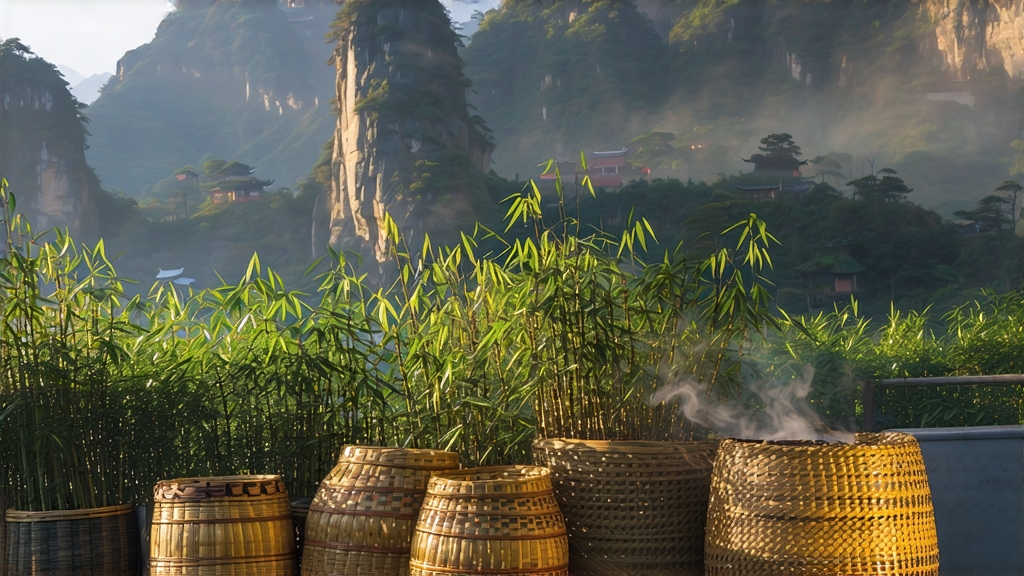
Tucked high in the mist-veiled Dabie Mountains of western Anhui Province, a tea so rare that even lifelong Chinese connoisseurs may never see it in leaf form still follows recipes encoded during the Ming dynasty. Huoshan Huangya—literally “Huoshan Yellow Bud”—is the easternmost member of China’s microscopic yellow-tea family. While green tea dominates export menus and pu-erh fills investment vaults, yellow tea occupies a slender gap between the two, a category whose very existence depends on a single, maddeningly delicate step called menhuang, “sealing yellow.” In Huoshan County this step is still performed in a room scented by pine charcoal and mountain orchids, where elders time the oxidation not with clocks but with the changing resonance of their own breath. The result is a liquor the color of antique ivory, a fragrance that moves from warm pumpkin to fresh magnolia, and a sweetness that arrives only after a deliberate three-second pause on the tongue—an echo of the patience demanded to make it.
History: From Tribute to Obscurity
The first written record appears in 1602, when the Huoshan magistrate presented “one hundred liang of small-bud yellow” to the Wanli Emperor. The court chronicle notes that the emperor, suffering from summer dampness, found the tea “cooling yet fragrant in the spleen,” and promptly elevated Huoshan Huangya to top-tier tribute status alongside Longjing and Songluo. For the next three centuries the buds were carried by mule to the Yangtze, then by imperial barge to Beijing, wrapped in dried bamboo leaves and yellow silk. When the Qing collapsed in 1911, the tribute system vanished, and with it the guaranteed market that had kept mountain villages refining their craft. By the 1980s fewer than twenty households still knew the full protocol; most gardens had been replanted with high-yield green tea cultivars. Revival began in 2004 when county archives rediscovered the 1694 “Huoshan County Gazetteer” with its precise withering schedule. A handful of families restarted production using heirloom seedlings grafted from ancient mother trees on Jinji Mountain. Today total annual output hovers around 1.2 metric tons, making Huoshan Huangya rarer per capita than saffron.
Micro-Terroir: Why Only These Peaks Will Do
The Dabie range acts as a climatic gate, trapping humid air from the Yangtze valley and releasing it as nightly fog that coats the mountain flanks until 10 a.m. At 800–1,200 m elevation the average diurnal swing is 12 °C, forcing the tea bush (a local variant of Camellia sinensis var. sinensis dubbed “Huoshan Xiaoyezhong”) to produce extra theanine in the afternoon warmth while retaining catechins in the cool dawn. Soils are Phyllite-derived, rich in selenium yet low in calcium, yielding buds that are arrowhead-shaped and downier than those of neighboring counties. Crucially, the fog filters UV-B radiation, reducing bitterness and allowing the hallmark “sealed” aroma to emerge later during menhuang.
Harvest Calendar: One Moon, Three Grades
Plucking begins on the first day after Qingming when the morning fog lifts before 8 a.m.—a window that lasts barely twenty days. Grade 1 (“Imperial Sparrow Tongue”) demands unopened buds 15–20 mm long, still bent like a bird’s beak and carrying 7–9% moisture. Grade 2 (“Gold Needle”) allows one just-unfurling leaf; Grade 3 (“Graceful Flag”) takes two leaves and a bud. Each grade is processed separately because the menhuang timing is leaf-size specific; larger leaves yellow 30% faster due to higher polyphenol oxidase activity. Experienced pickers finish before noon so that the buds arrive at the village workshop while still mountain-cool, wrapped in hemp cloth to prevent premature oxidation.
Craft: The Five Acts of Yellowing
- Sha Qing (Kill-Green) – 90 s at 140 °C on a shallow bamboo-roofed wok fired with local pine. The goal is 55% moisture reduction while preserving 70% of the active enzymes—less than green tea, more than white.
- Chu Huang (Primary Yellowing) – The hot leaves are immediately piled 8 cm deep in oak trays lined with wet linen.